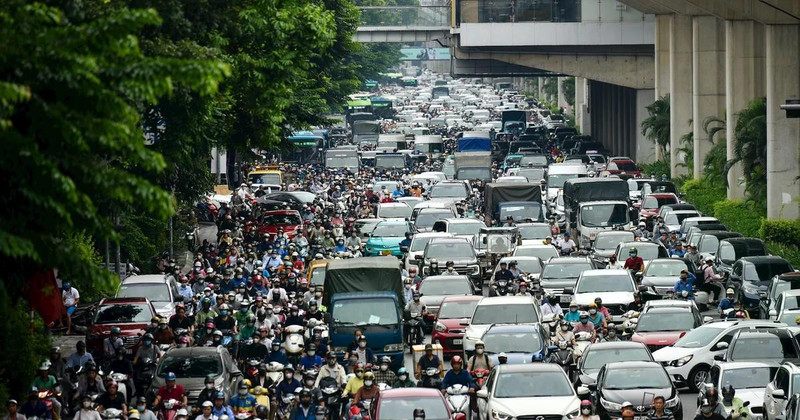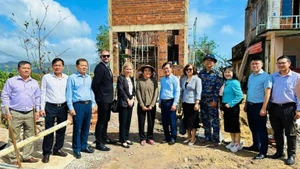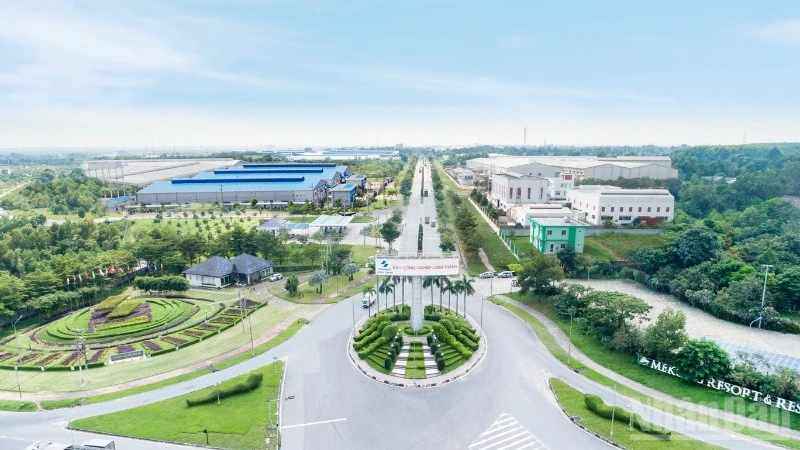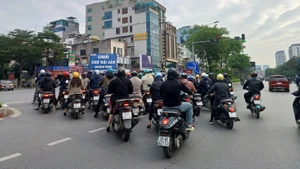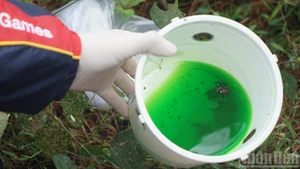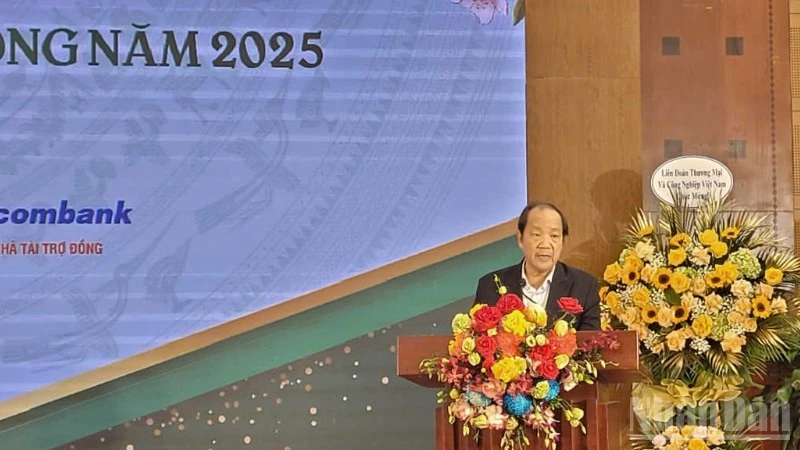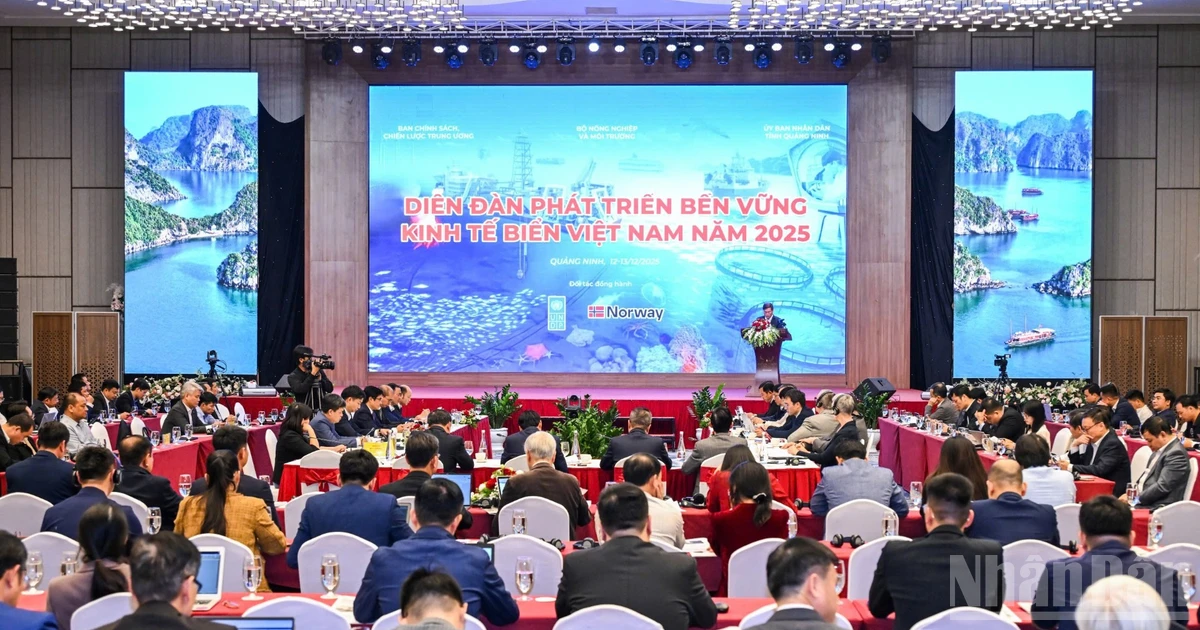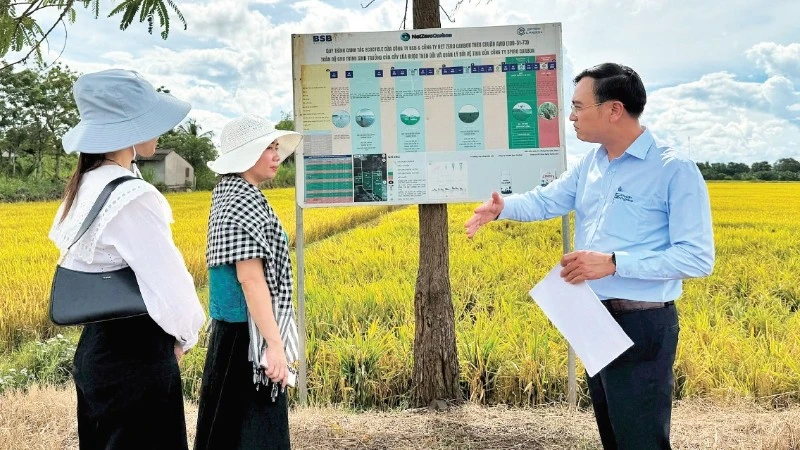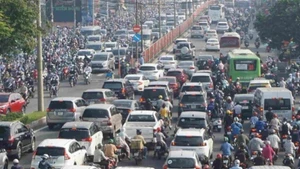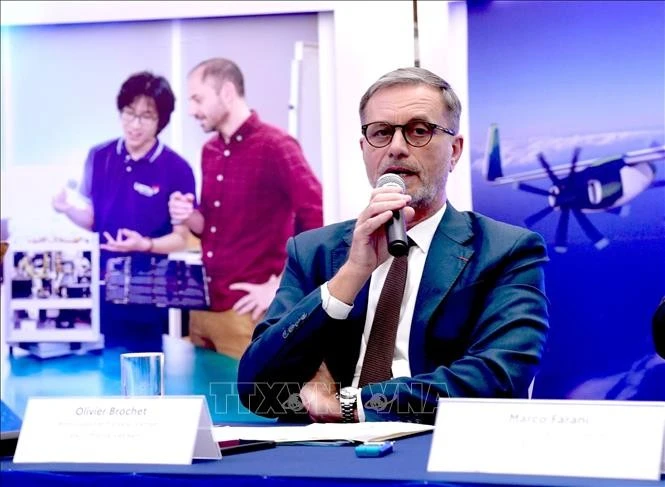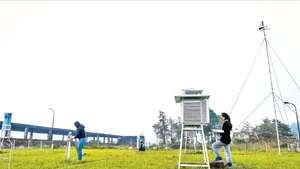This proposal aims to control and minimise air pollution caused by emissions, thereby contributing to public health protection and improving the quality of the living environment.
The roadmap provides a legal basis for the gradual removal of vehicles that do not meet emission standards, while promoting the shift towards clean, environmentally friendly vehicles. Its implementation is also intended to help fulfil Vietnam’s international commitments on greenhouse gas reduction and climate change mitigation.
Tightening emission testing for motorcycles and mopeds
According to the draft, emission testing for motorcycles and mopeds in circulation will begin on 1 January 2027 in Hanoi and Ho Chi Minh City. In four other centrally governed cities, including Hai Phong, Da Nang, Can Tho, and Hue, the implementation will start on 1 January 2028. The remaining provinces and cities will begin emission testing from early 2030 or earlier, depending on local conditions.
The draft specifies that: Motorcycles manufactured before 2008 will be subject to emission level 1; those made from 2008–2016 will apply level 2; those made from 2017 to June 30, 2026 will apply level 3; and motorcycles manufactured after July 1, 2026 will be subject to level 4. As for mopeds, those made before 2016 will apply level 1; those made from 2017 to June 30, 2027 will apply level 2; and those manufactured from July 2027 onwards will apply level 4.
Hanoi and Ho Chi Minh City will implement the strictest emission standards. Specifically, from January 1, 2032, all motorcycles and mopeds in use within these cities must comply with at least emission level 2, regardless of the year of manufacture. Vehicles that do not meet this requirement must be retrofitted or will be removed from circulation. Additionally, motorcycles and mopeds entering low-emission zones in Hanoi, as defined by the Capital Law, must comply with emission regulations stipulated by resolutions of the municipal People’s Council.
Observations in Hanoi and Ho Chi Minh City show that many dilapidated, number-plate-less motorcycles are still in daily use, some emitting thick black smoke into surrounding traffic. These vehicles are used not only for commuting but also for transporting goods and scrap materials, potentially affecting the environment and road safety.
According to the Ministry of Transport, motorcycles are the largest source of pollution emissions, yet remain uncontrolled because the 2008 Road Traffic Law contains no specific provisions. Since 2010, the Government has tasked the Ministry of Transport with developing a concrete roadmap for motorcycle emission control. Hanoi and Ho Chi Minh City were assigned to complete their emission inspection network, targeting 80–90% motorcycle emission compliance by 2015. However, emission control for motorcycles has yet to be implemented, while the number of motorcycles in major cities continues to rise rapidly.
Four proposed emission levels will apply to motorcycles and mopeds. (Image from the Ministry of Agriculture and Environment)
Planning for replacement vehicles
Statistics show that Hanoi has over eight million vehicles, of which 6.9 million are motorcycles. In Ho Chi Minh City, the number of motor vehicles exceeds nine million, with motorcycles accounting for more than 90%, placing immense pressure on transport infrastructure and air quality. In urban areas, motorcycles are a major contributor to air pollution and fine particulate matter (PM2.5). Therefore, the new emission roadmap is expected to help improve air quality and promote green transformation in the transport sector.
However, experts suggest that implementation must follow a suitable roadmap and ensure a synchronised public transport infrastructure to avoid causing disruptions for residents. Authorities also point to several potential negative impacts, such as the roadmap may create social issues if not accompanied by financial support policies and awareness-raising communication, especially for vulnerable and low-income urban groups, when applied early in Hanoi and Ho Chi Minh City (from January 1, 2027). When applied nationwide from 2030, the policy could place pressure on large-scale vehicle replacement, causing difficulties for residents in economically disadvantaged, remote, or mountainous areas with limited access to emission inspection facilities.
On this issue, Mr Nguyen Huu Tien, Deputy Director of the Department of Science, Technology, Environment and Building Materials (Ministry of Construction), noted: In the near future, once motorcycle emission inspection regulations are introduced, high-emission vehicles may be phased out. Authorities will also study appropriate policies for vehicle conversion. The Ministry of Construction has already issued regulations on green, clean vehicles, prioritising the operation of low-emission vehicles in designated areas. Conversely, vehicles not meeting green standards will be restricted from entering regulated zones.
The Hanoi People’s Committee has also stated that a vehicle replacement programme will be introduced, including support for exchanging vehicles and loan interest subsidies, aiming for most people in low-emission zones to switch to electric vehicles and stop using petrol-powered ones. The city also plans to engage with manufacturers under the principle of cooperation between the state, enterprises, and the people — a shared responsibility to create a cleaner living environment.
From an expert perspective, Dr Hoang Duong Tung, Chairman of the Vietnam Clean Air Network, commented: “Introducing an emission inspection roadmap is essential for improving air quality. It is also a civic responsibility for road users, since we constantly demand clean air while failing to contribute to environmental improvement. There should be incentives to encourage public participation while avoiding blanket policies. Initially, efforts should target households that genuinely cannot afford new vehicles and whose livelihoods are already severely degraded. The process should begin with pilot implementation before being expanded nationwide, in a transparent and open manner.”
Associate Professor Dr Do Van Dung from Ho Chi Minh City University of Technology and Education added another angle: It is not enough for motorcycles alone to meet emission standards — the fuel (petrol) used by these vehicles must also be compatible to ensure environmental protection. Clear regulations are needed on Euro 4 and Euro 5 fuel standards to match emission levels, along with appropriate fuel pricing to encourage the use of standard-compliant fuels.
Air pollution from traffic in major cities has long been identified as a serious threat. Yet there have been few signs of improvement, so action must be taken before it is too late.
World Bank statistics show that air pollution in Vietnam causes annual economic losses of 5–7% of GDP. According to a study by Fulbright University Vietnam, air pollution caused an estimated economic loss of 9.86–12.45 billion USD in 2013, a figure that has increased significantly in recent years.
According to research by Associate Professor Dr Ho Quoc Bang from the Centre for Air Pollution and Climate Change Studies (Institute of Environment and Resources, Vietnam National University Ho Chi Minh City) and colleagues: In both Hanoi and Ho Chi Minh City, there are three primary sources of toxic air emissions: road transport vehicles, industrial production plants, and residential activities (local sources).
In Hanoi, road traffic is the largest contributor of most toxic air pollutants: nitrogen oxides (NOx) account for 87%, carbon monoxide (CO) 92%, sulphur dioxide (SO2) 57%, non-methane volatile organic compounds (NMVOC) 86%, methane (CH4) 96%, and fine particulate matter PM2.5 74%. Among vehicles, motorcycles are the leading emitters of NOx and CO in Hanoi. Heavy-duty trucks are the main source of PM emissions.
These pollutants can adversely affect human health, including those in traffic, causing respiratory diseases, eye and mucous membrane irritation. In particular, fine PM2.5 particles, laden with toxic substances and diameters less than 2.5μm (about 30 times smaller than a human hair), are extremely dangerous as they can penetrate deep into the alveoli, pulmonary veins, and the circulatory system.
Experts from the US Environmental Protection Agency note that PM2.5 particles contain heavy metals capable of causing cancer or damaging DNA and triggering genetic mutations. The World Health Organisation has declared PM2.5 the fourth leading cause of premature death globally.
